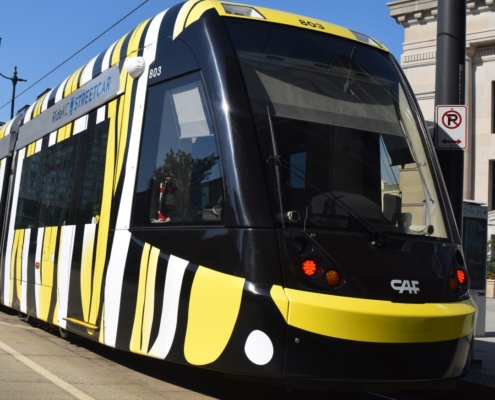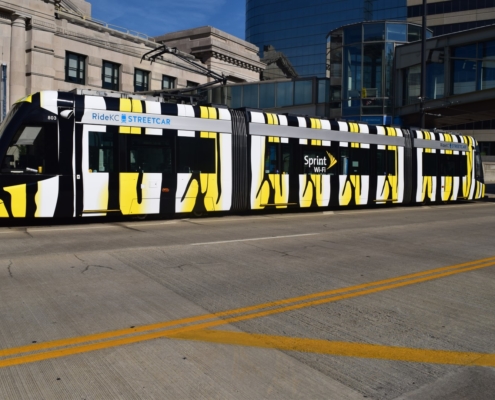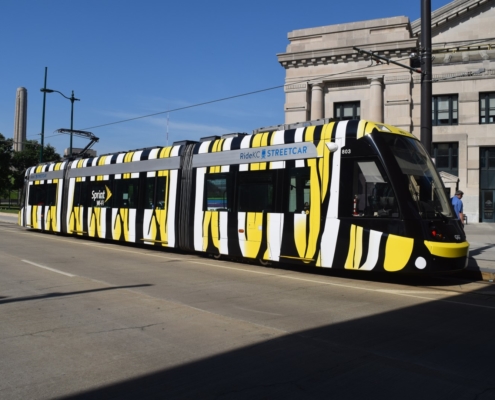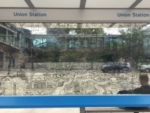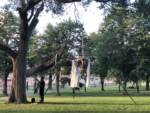MACROCOSMOS CATERPILLAR: MONARCH STREETCAR
Monarch Butterfly Plantings:
The microcosmos of insects is brought into the macrocosmos of Downtown KC through the metamorphosis of a KC Streetcar vehicle into a ready-made animatronic monument depicting the bold-looking Kansas City native, the Monarch Butterfly Caterpillar. A giant caterpillar can’t help but evoke the talking, smoking caterpillar Alice meets in the flower forests of Lewis Carroll’s Alice’s Adventures in Wonderland. The streetcar caterpillar cannot talk, but if it could it would politely ask you not to smoke (it’s a non-smoker), and then go on to tell you about its magical phases of metamorphosis and awe-inducing migration as a butterfly to the Oyamel Fir Forests of Central Mexico. A mobile portrait of the caterpillar stage of the Monarch Butterfly located on the streets of our most developed and urban setting gestures to a source of important wealth that shapes our identity: our city’s nature. Scaling the monarch to the size of the streetcar magnifies it’s essential role as a pollinator while celebrating Kansas City’s position within the Monarch migration flyway. Viewers are encouraged to encounter real Monarch caterpillars by fostering our city’s Monarch habitats; identifying, planting and protecting the caterpillar’s sole food and host plant, milkweed (Asclepias species).
Location:
KC Streetcar vehicle wrap
Bio:
Christina Bereolos is an emerging artist, Red Bridge/Blue River founder, member of the Lepidopteran Art Group, flaneuse, storyteller, activist, and lifelong Kansas Citian who is concerned with preserving and defining urban wild spaces for native species. Her work centers around building a sense of home and belonging through economical and sustainable off-beat acts of discovery, service, celebration, gift-giving, and inquiry. Of particular interest to her is the storing of personal and collective narrative histories in bodies and landscapes and how that shapes experience.
Amanda Gehin is an artist and environmental educator living and sharing her passion for the natural world in Kansas City, Missouri. She has a BFA from the Kansas City Art Institute, studied at the International Ceramics Studio in Kecskemét, Hungary, and has been an artist-in-residence for Charlotte Street Foundation and BNIM Architects. She thrives on the edge, between disciplines, and is a former native landscape specialist for the Missouri Department of Conservation, Pollinator Program Manager for Bridging the Gap, and recently obtained Permaculture Certification in the refugee village of Longo Maï, Costa Rica.
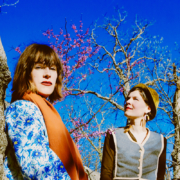
website | amandagehin.com
instagram | @dispersedbyants
instagram | @waterwatereverybear
flickr | www.flickr.com

